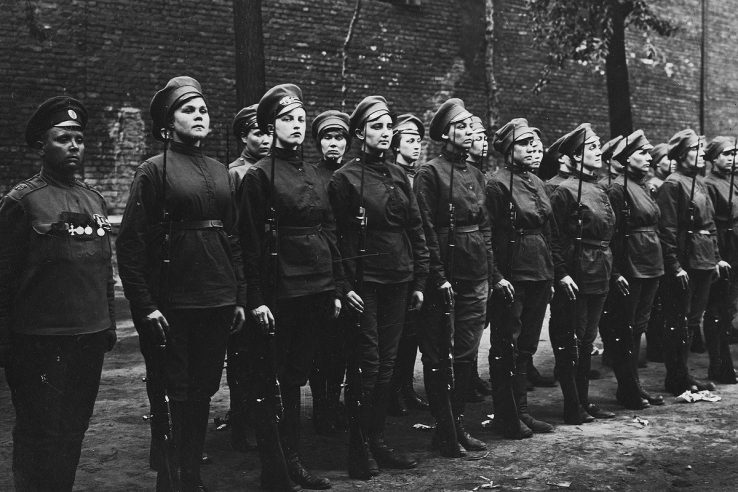Peasants, widows and royalty all wanted to serve Mother Russia in the Great War. Some were nurses, others support troops, but on occasion women would put Mosin-Nagant rifle to shoulder and fight quietly as front line troops.
Cossacks and Siberian sniper units were reinforced by female recruits, but the concept of all-female infantry units was viewed with skepticism. Yet with the fall of the Tsar Nicholas II regime in the spring of 1917, and the war against Germany lingering, the Provisional Government needed fresh bodies to send to the frontlines.
And from the vast Russian multitudes a select number of women stepped forward to become soldiers in the 1st Women’s Battalion of Death. Hundreds of women, between the ages of 18 and 40, would turn out to be inspected by the tough commanding officer: Captain Maria Bochkareva. Yet few would pass muster.
Baptism by fire
After fourteen-hour days of drills, will-breaking training and pitiless discipline, the Battalion of Death, Bochkareva’s battalion molded in her uncompromising image, went to war. Sworn to never surrender, thus earning the death-embracing unit name, the first combat foray of this unique assemblage took place in July of 1917.
Attached to the female infantry unit was a small cadre of men, including a few officers and machine gunners. The latter crews were given the valuable, if fussy and heavy, Puleymot Maxima machine guns that set the standard for the Russian doctrine of overwhelming fire.
With blackened gear festooned with skulls the Women of Death marched into battle on July 25 near the village of Smorgon. As the Maxim machine guns rattled away, the female infantry pushed and curled back the occupying German forces. They would briefly take territory, only to lose it in a vigorous German counterattack. In the tactical retreat conducted by Bochkareva’s unit, she was noted for her valor in the face of stiff German assaulters.
Their fallback was by no means indicative of their skills as war fighters, but rather the face of warfare changing each day with each bullet. Ground was gained and lost, back and forth, in a tug of war that saw antiquated tactics outmatched by mercilessly efficient twentieth-century weapons.
Legend
The 1st Women’s Battalion of Death would see combat only once, but their creation spawned several other female-only combat units, like the 1st Petrograd Women’s Battalion and the 3rd Kuban Women’s Shock Battalion.
By the time of the October Revolution, the women who had fought for the tsar and the transitional leadership were now divided between the Whites and Reds. Bochkareva would stand with the Whites and find herself losing, imprisoned by Bolshevik forces.
The legend around Bochkareva tells of her being placed before a firing squad. Stripped naked and lost in prayer to Saint Anna — patron saint of women in labor and miners — Bochkareva was recognized by one of the men in the firing squad. It is said he threw his rifle down and rushed to her side, declaring she saved his life during the war and that he would die by her side.
Eventually she would be released, receive an audience with President Woodrow Wilson to help restore the White factions to power in Russia only to be captured and killed by Red forces upon her return.
Yet the firing squad miracle would earn the tough leader of the Women’s Battalion of Death the title of “Martyr Maria the Soldier”.






